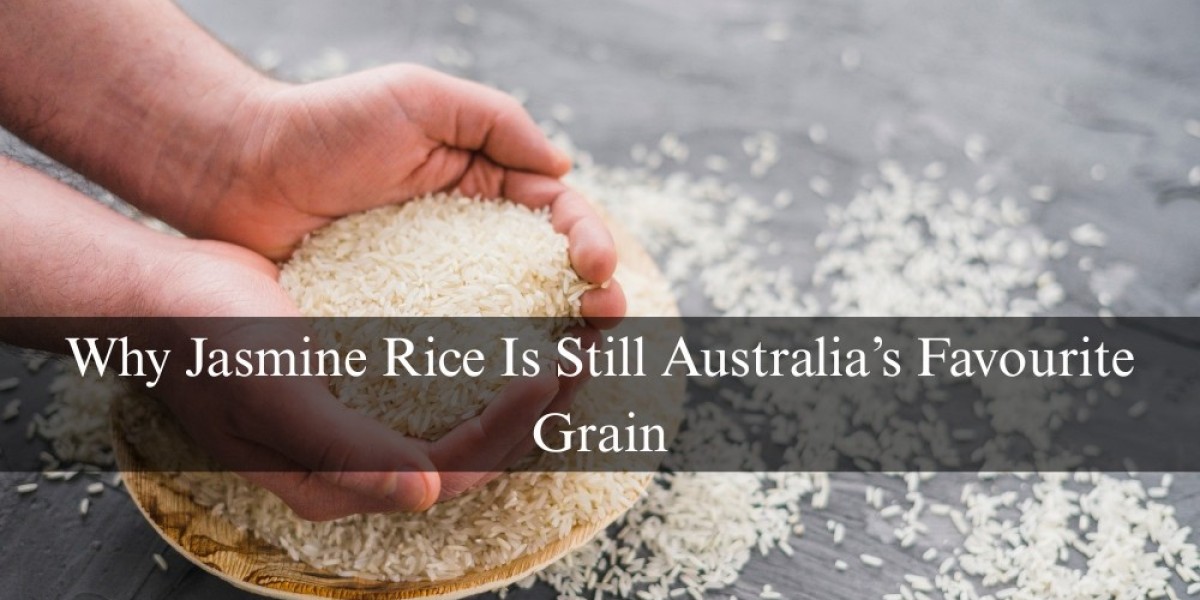I used to think rice was just... rice. You boil it, fluff it, and serve it. Nothing too deep about it, right? But a few years back, I grabbed a big 20-kilo sack of SunRice Jasmine Rice during a bulk shop — more for convenience than anything else. I wasn’t expecting it to make much difference, to be honest.
That first batch changed my mind. The smell was the first surprise — a light, almost flowery scent that drifted through the kitchen while it cooked. It wasn’t overwhelming, just enough to make you pause. And the texture? Soft but not mushy, fluffy but not dry. I remember plating it up under a quick stir-fry, and suddenly, the whole meal just felt… better. Like I'd put in more effort than I actually had.
Since then, it’s become the only rice I keep in the pantry. Not because it’s fancy, but because it just works — whether I’m cooking dinner for the family or tossing together leftovers.
A flavour profile that fits any meal
You don’t have to be a chef to notice the difference. Jasmine rice is naturally aromatic and just a bit sticky, which gives it a texture that sits nicely on the plate without turning into clumps. It’s light, dependable, and pairs with just about anything.
Here’s what makes it stand out:
A gentle fragrance — not overpowering, just pleasant
Fluffy but moist texture that holds its shape
Subtle flavour that takes on sauces or broths
Quick cook time, minimal fuss
Whether it’s under a curry, part of a rice salad, or the base of a meal prep bowl, it shows up without trying to steal the spotlight. That’s part of what makes it a staple in so many Aussie homes.
Why Australians are still choosing jasmine rice
Australia’s food habits have evolved, but some pantry staples remain steady. Jasmine rice sits comfortably alongside pasta, bread, and oats in homes across the country. Its broad appeal crosses cultural lines, dietary preferences, and cooking styles.
Reasons for its popularity include:
Easy to prepare in bulk or single portions
Affordable for both retail and foodservice buyers
Gluten-free, naturally low in fat, and filling
Versatile across Asian, Middle Eastern, and Western dishes
Even in my extended family, which includes everything from vegetarians to barbecue traditionalists, jasmine rice has become the default side dish. It’s subtle, reliable, and always goes down well.
The role of SunRice in quality and consistency
Australia’s position in the global rice supply chain means jasmine rice is not just imported — it’s also supported by a structured system of rice production in Australia that balances domestic growing with consumer demand. This gives buyers confidence in quality control, traceability, and consistent availability year-round.
What stands out is the consistent grain size, reliable cooking performance, and secure bulk packaging, especially in the 20kg format sold through trusted grocers like BKK. That consistency is key for people running commercial kitchens or feeding large families.
Nutritional value is often overlooked
While rice isn’t considered a “superfood,” jasmine rice holds its own in terms of basic nutritional support, especially as part of a balanced plate. It’s easily digestible, hypoallergenic, and contributes to essential vitamin intake when consumed in regular portions.
Nutritional benefits of jasmine rice:
Naturally gluten-free
Low in saturated fat and sodium
Source of thiamin (Vitamin B1) and niacin
Mild glycaemic impact when paired with protein or fibre
In fact, rice nutrition facts highlight jasmine rice as a legitimate contributor to thiamin intake, a nutrient often overlooked but essential for energy metabolism and nerve function.
Storage tips: buy big, store right
I’ve kept bulk jasmine rice in a sealed drum for over a year without it losing quality — no pests, no strange odours, no clumps. But that only works when you follow the basics of storing jasmine rice long-term. Proper airflow, dry surroundings, and keeping containers sealed tightly are what really make the difference over time..
Best practices for long-term storage:
Keep in airtight containers (plastic or metal)
Store in a cool, dry place out of sunlight
Avoid stacking near strong-smelling ingredients
Use a first-in, first-out rotation method
I’ve kept bulk jasmine rice in a sealed drum for over 12 months without issue, and the flavour and texture remained intact.
Jasmine rice vs. other rice types
We often lump rice into one category, but each variety behaves differently in the kitchen, and jasmine rice has a very distinct profile.
Comparison with other rice types:
Basmati: Longer and drier, ideal for Indian cuisine, but less aromatic
Brown rice: Higher fibre, but chewier and takes longer to cook
Short-grain white rice: Stickier, often used in sushi and desserts
Parboiled rice: Harder texture, less fragrance
What makes jasmine rice a standout is its ability to hold shape while still feeling soft — a texture that’s difficult to match.
Cost-effectiveness in bulk purchasing
For families, caterers, and restaurant operators, the economics of jasmine rice make a lot of sense. Bulk buys lower per-kilo costs, reduce packaging waste, and simplify meal planning, especially when the grain is versatile enough to match various menus.
Why buying jasmine rice in bulk works:
20kg bags offer the best value
Minimal spoilage when stored properly
Supports high-volume cooking without extra prep
Works across rice bowls, fried rice, and even desserts
And with supply chains stabilised, access to premium jasmine rice through Australian retailers like BKK has never been easier.
Culturally familiar, locally available
Jasmine rice isn’t just popular in Thai households — it’s become a base for fusion food, Aussie-Asian recipes, and even contemporary health bowls. What’s notable is how culturally embedded it’s become without losing its identity.
Where it shows up:
Thai curries and salads
Vietnamese grilled meat plates
Filipino garlic fried rice
Aussie fusion poke bowls and meal preps
In multicultural kitchens, jasmine rice offers both tradition and adaptability. It’s the bridge grain — one that respects heritage while fitting neatly into modern meal planning.
It’s not trendy — it’s timeless
Consumer opinion also plays a key role in why jasmine rice is popular. Many buyers value its fragrance, quick cooking time, and its place in both traditional and fusion cuisine — sentiments echoed in everyday online discussions and culinary forums.
In our home, it’s the default. It’s on the plate more days than not. And the fact that you can now get reliable, high-volume bags through trusted suppliers just reinforces why jasmine rice remains Australia’s favourite.
The grain that fits every table
From restaurants and takeaway joints to family dinners and solo meals, jasmine rice continues to dominate for one simple reason: it fits. It doesn’t fight for attention. It doesn’t demand special treatment. It just blends, lifts, and supports the rest of the dish.
When you buy sunrice jasmine rice, you're not buying hype — you're buying reliability, value, and flavour that complements everything else in your kitchen. And that’s why this grain remains an Australian favourite, year after year.








